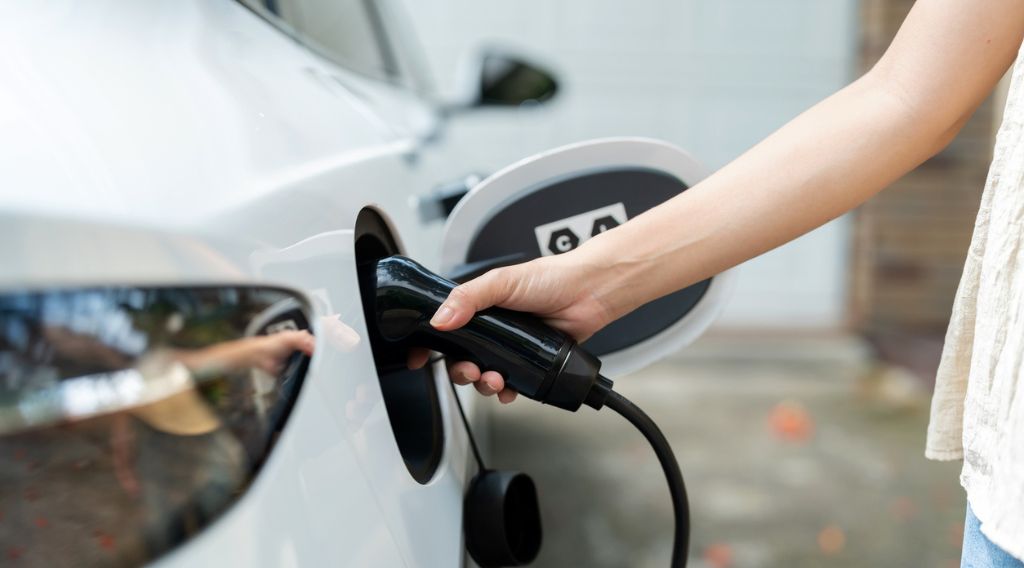
How much money can US drivers expect to save on fuel by switching to an electric vehicle? We explored this question with Heather Brown on CBS News Minnesota, and now our new calculator helps consumers do the math.
The recent increased volatility in gas prices has left many US drivers looking for alternatives. People are driving less and looking for more efficient vehicles. As consumers increasingly consider electric vehicles, they want to know how to calculate the potential costs and savings.
Gas price volatility driving interest in electric vehicles
The average price per gallon of gas skyrocketed 146 percent to $4.75 in June of this year. That’s up from just $1.93 in April 2020, when the prices plummeted in the early months of the pandemic.
Gas price volatility, combined with other market factors, led to electric vehicles capturing close to 7 percent of the market share for all cars sold in the US in June 2022. A Bloomberg analysis indicates that the US has reached the tipping point for electric vehicle sales. The analysts at Bloomberg found that electric vehicle sales follow the same S-shaped curve as other successful new technologies, such as smartphones, laptops, and LED lightbulbs. While sales are slow leading up to 5% of the market share, they rise exponentially as the product moves from early adopters to the mainstream.
The tipping point for electric vehicle sales in the US came as drivers realized how much cheaper, more practical, and environmentally friendly it is to drive an electric vehicle compared to a gas vehicle. The electric drivetrain is much more efficient than the internal combustion engine. It can often exceed 130 miles per gallon equivalent (MPGe), compared to just 25 miles per gallon (MPG) for the average gas vehicle in the US.
Calculating fuel cost savings by switching to an electric vehicle
We estimate that the average American driver can save close to $1,500 annually on fuel by switching to electric vehicles. Your fuel cost savings from switching to an electric vehicle will depend on several factors, such as the number of miles you drive each year, the cost of gas in your area, the efficiency of your current gas vehicle, and the cost of electricity where you live.

Find out your expected fuel cost savings from switching to an electric vehicle by using this calculator we created for US drivers. The calculator uses the following data to calculate the average fuel savings you can realize by switching to an electric vehicle:
- your estimated annual miles driven
- average fuel economy of the vehicle
- average local price of gasoline
- average price of electricity in your region
The calculator starts with default national averages (see notes for data sources).
Are you interested in looking into an electric vehicle? Find a test drive event near you or visit a local dealership so you can experience an electric vehicle firsthand. Check out this blog post from GPI-facilitated Drive Electric Minnesota for tips on buying a pre-owned electric vehicle.
Data source notes
The graph and the calculator use national averages from the following data sources:
- The average annual miles are based on the US Department of Transportation (DOT) Federal Highway Administration (FHWA) figures for US drivers. Source: Average Annual Miles per Driver by Age Group.
- The average fuel economy for light-duty vehicles is 25.7 miles per gallon (MPG), as per the US Environmental Protection Agency (EPA) Automotive Trends Report. Source: Download the 2020 Automotive Trends Report (previous year) | US EPA.
- The price of gasoline was $3.993 on average on August 22, 2022, as per the US Energy Information Administration. Source: US Gasoline and Diesel Retail Prices (gov).
- According to the US Energy Information Administration, the average annual US residential retail energy price in 2021 was 13.72 cents per kilowatt-hour. Source: US Energy Information Administration – EIA – Independent Statistics and Analysis.
- The average fuel economy for electric vehicles sold in the United States is 0.35 kWh per mile. This figure is calculated by using the fuel economy figures from the US Environmental Protection Agency and US Department of Energy. Source: US Department of Energy, www.fueleconomy.gov.


